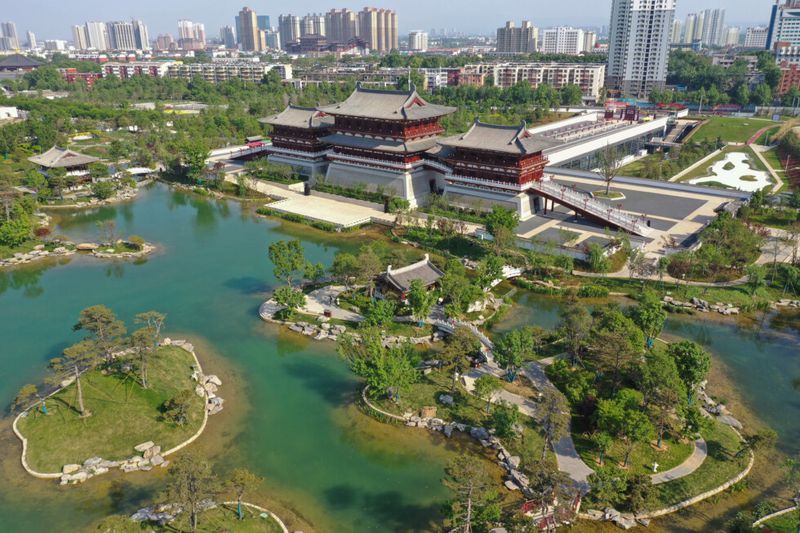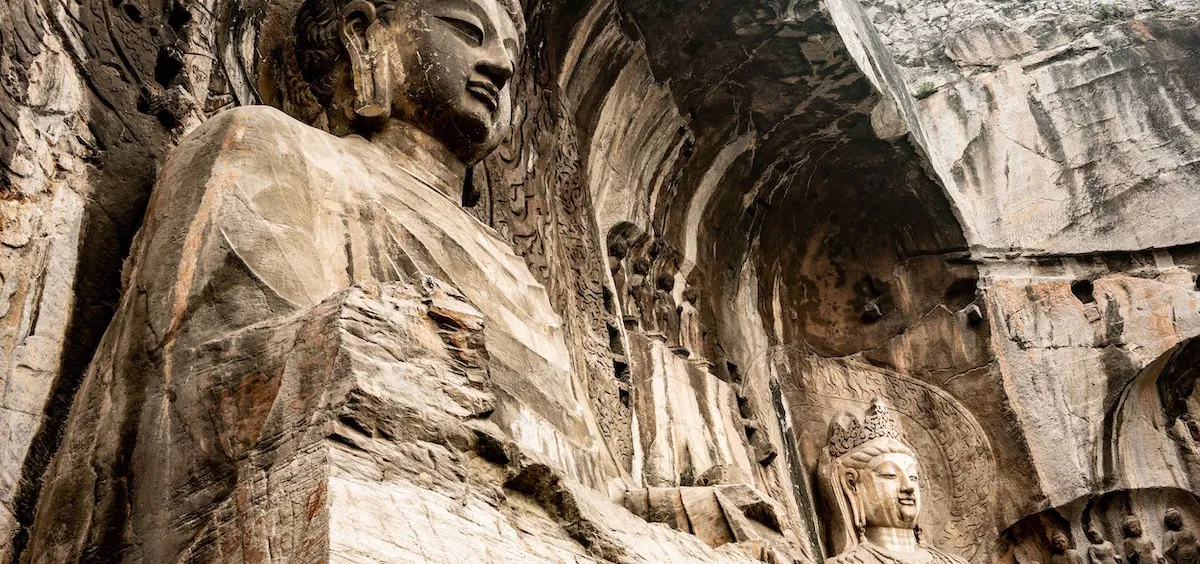The cradle of Chinese civilization maintains a distinctive dialect
For over a decade, The World of Chinese has been offering modern Chinese-language instruction from street talk to social phenomena to character tales. With 129 officially recognized dialects (方言), though, we have barely scratched the surface of everything there is to learn.
On select Fridays, TWOC will be presenting a basic lesson on speaking like a native of a certain region of China.
As early as the Neolithic Era (5500 – 2500 BCE), a vibrant farming community along the Yellow River in modern-day Henan province made some of the earliest known Chinese art—yellow-orange pottery painted with elaborate black designs of animals and human faces.
The sweeping fertile flatland known as the “Central Plains” (中原), centered around modern-day Henan province, was the cradle of Chinese civilization. With three out of the seven ancient capitals of China (Luoyang, Kaifeng, Anyang) based in Henan, the area was also one of the most prosperous and densely populated of China until the end of the Northern Song dynasty (960 – 1127).
The city of Luoyang, the capital of nine dynasties, was host to the Luoyangyin dialect, the lingua franca of emperors, officials, and intellectuals. Southern Song dnasty (1127– 1279) poet Lu You (陆游) once hailed Luoyangyin the “most correct pronunciation” of the Chinese language, and it remained in official use until the Qing dynasty (1616 – 1911).

Luoyang was the capital of the Eastern Han, Sui, and Tang dynasties (VCG)
Today, Henan is China’s third most populous province, with 94 million people. Speakers of Henan dialect can be heard across the country as many people venture from the heartlands to coastal cities for work.
Our speaker hails from the city of Luohe, home of China’s largest meat processor that produces China’s favorite red-wrapped sausage snack, a favorite for train journeys and at tourist sites. The Luohe speech that you hear belongs to the largest Henan subdialect that is nearly ubiquitous across the flatlands.
Here’s presenting Henanhua—known for its directness, slurred speech, and rollicking erhua:
Key characteristics of Henan dialect
- Personal pronouns: In addition to “me” (我 wǒ) and “you” (你 nǐ), Henan hua has 俺 ( ǎn), a pronoun meaning “we/our,” and 恁 (nèn), a pronoun meaning the plural “you” or “your.” For example, to invite someone to “come eat at our house,” you can say, 来俺家吃饭 (lái ǎn jiā chīfàn).
- Elisions: As in many northern dialects, phrases are often slurred over the consonants in the middle. For example, “how” 怎么 (zěnme) is shortened to 咋 (zǎ). If someone does a task poorly, you can tell them their performance was 不咋地 (bù zǎ de). Similarly, “what” 什么 (shénme) is shortened to 啥 (shà); “don’t have” 没有 (méiyǒu) is shortened to 冇 (mao, mou, mo, or mu).
- Consonant shifts: Henan dialect makes heavy use of the tip of the tongue; for example, “west” 西 (xī) becomes pronounced “si”; “wine” 酒 (jiǔ) becomes pronounced “ziu.”
- Vowel shifts: The shifts are many; for example, from “ui” to “ei,” meaning that “correct” 对 (duì) becomes pronounced “dei”; and “ue” to “uo,” meaning that “snow” 雪 (xuě) becomes pronounced “siuo.”
- Action participle: The particle that denotes present tense after a verb, 着 (zhe), becomes pronounced 住 (zhù). For example, “eating” is 吃住 (chī zhù) and “watching” is 看住 (kàn zhù).
- 恁搁外闲住生意招呼着,白叫人家搉包住你了。
Nèn gē wài xián zhù shēngyì zhāohūzhe, bái jiào rénjiā què bāo zhù nǐle
You guys be careful doing business out there, don’t let people scam you.
“搉包” is a local phrase for “swindled and tricked.” Notice that when the speaker speaks quickly, many consonants disappear into the void.
- 夜儿,前儿,大前儿,咱都是吃里面条儿,今儿或儿明儿管换成米饭么?后儿也中。
Yé er, qián ér, dà qián ér, zán dōu shì chī lǐmiàn tiáo er, jīn er huò er míng er guǎn huàn chéng mǐfàn me? Hòu er yě zhōng.
Yesterday, the day before yesterday, and the day before that, we ate noodles every day, so can we change to rice today or tomorrow? Day after tomorrow works too.
Monosyllabic expressions for times (with an ‘er tacked on, inevitably) are dizzyingly abundant in Henan dialect.
- 搁庄里头,大家诺时候好谷堆一坨喷夸。
Gē zhuāng lǐtou, dàjiā nuò shíhòu hǎo gǔ duī yī tuó pēn kuā.
In the village, people used to like to get together and chitchat.
To “huddle in the haystacks” (谷堆一坨) is a colloquial Henan expression for “get together,” as the grain fields were the key fixture of rural life. During mealtimes, people would gather to eat in the haystacks and trade information and “chitchat,” or literally, “spurt praise/boasting” (喷夸).
- 乖乖咧,你咋这信球里?
Guāiguāi liě, nǐ zǎ zhè xìn qiú lǐ?
What the hell, why are you so such a fool?
The exclamation 乖乖咧 is used to express shock, whereas a 信球 is an almost endearing expression that someone’s thinking is less than clear.
- 这事儿你怼里真不赖。
Zhè shì er nǐ duì lǐ zhēn bùlài.
You killed it. (You did that really well.)
The verb 怼 means “to attack” or “to strike,” but just like in English, when applied to a task, it means to do something really well. Like you, for making it this far!
Cover image of the Longmen Grottoes near Luoyang from VCG












